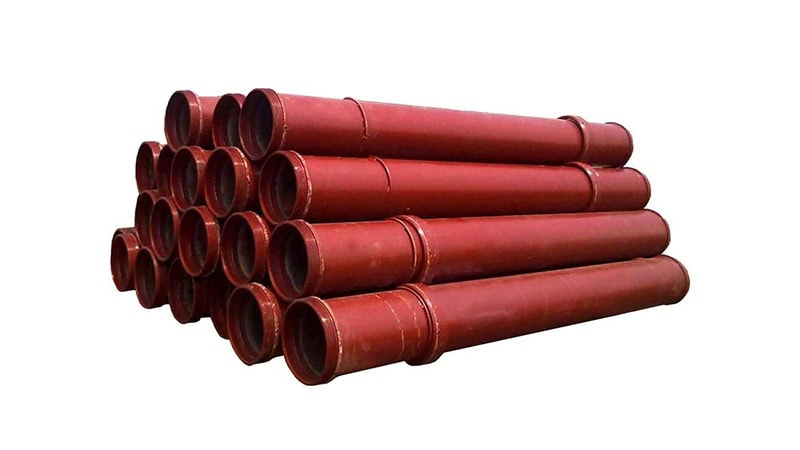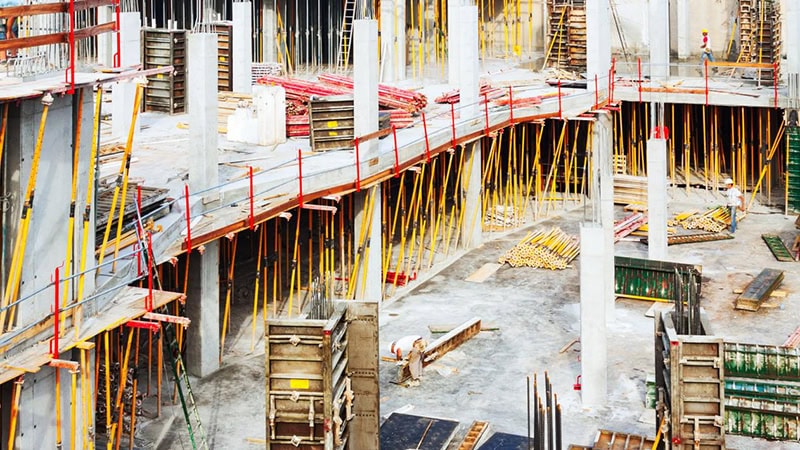
Key Takeaways
- Casing and tremie systems are fundamental for stable, high-quality deep foundation concrete placement.
- Using the correct tremie pipe assembly and concrete mix helps prevent segregation and blockages during pouring.
- Proper installation and alignment of casing mitigate soil collapse and ensure borehole stability.
- Continuous monitoring of concrete flow and pipe position is crucial for maintaining structural integrity.
- Adhering to proven best practices prevents common mistakes and guarantees a durable, robust poured concrete foundation.
Achieving durable, reliable deep foundations starts with ensuring high-quality concrete placement. Projects involving drilled shafts, water wells, or poured concrete foundation piles face significant construction challenges due to deepness, groundwater, and soil instability.
The use of casing and tremie methods is essential for these demanding environments. These techniques deliver controlled, efficient, and safer pouring operations, helping maintain borehole stability and consistent concrete quality.
This article offers practical best practices for using casing and tremie systems, such as those provided by Everstar Machinery, to help construction professionals improve structural integrity and safety on every project.
Casing and Tremie Application in Concrete Placement
Casing, a temporary or permanent steel or plastic liner, stabilizes deep boreholes in challenging ground conditions. This vital support is crucial for projects that require poured concrete foundation systems, particularly in loose or waterlogged soils.
The casing supports excavation walls during construction, allowing for a safe and uninterrupted pouring operation.
A tremie is a specialized pipe—either a flexible hose or a rigid tube—used to place concrete underwater or in deep boreholes.
Unlike traditional methods, the tremie system enables the pouring without segregation by delivering the mix directly to the bore base, displacing water or mud upwards and preventing contamination.
Tremie pipes are indispensable in pile foundations, caissons for bridge construction, concrete well casing, and foundations where unstable soils or significant groundwater are present.
Why Tremie and Casing Are Used Together
The combination of casing and tremie ensures optimal borehole stability during hardened concrete applications.
The casing prevents loose soil and water ingress, while the tremie pipe enables precise placement at the foundation depth, preserving a controlled, continuous discharge and preventing soil collapse or dilution of the mix.
Equipment and Materials Required for Tremie Concrete Flow

For effective tremie operations, several critical components are necessary:
- Tremie pipe: For underwater and in-depth foundation applications, Everstar Tremie Pipes allow adequate concrete placement and stabilization due to their robust design and accurate discharge control.
- Hopper: Funnels material from ground level into the pipe for smooth pouring.
- Sealing plug or pig: Primed in the pipe to prevent water contamination at the start of the pour.
- Concrete pump: May be used with flexible hoses for continuous pour over large volumes.
- Concrete mix: Designed for high workability (7–9 inch slump), optimal aggregate size, and superior flowability.
Casing types include steel casing, concrete well casing, reusable (temporary), or permanent varieties to suit pile foundation needs. Other requirements demand strict quality: the mix must be cohesive, flowable enough for tremie pouring, and free from segregation.
Proper Tremie Pipe Assembly and Handling
Sections of tremie pipe, typically 1–3m long, must be assembled with airtight, watertight joints to prevent mix leakage. Before starting the pour, ensure tight connections, correct pipe positioning to the bore’s base, and that the entire system is primed for rapid, uninterrupted discharge.
Site Preparation for Placement of Concrete and Installation Guidelines
Thorough preparation is essential for the pouring process. Begin with a detailed pre-inspection of the borehole to confirm suitable diameter, required depth, and casing alignment. Clean the borehole of loose soil and water to avoid introducing debris into the poured concrete foundation.
Next, install the casing to the designated deepness, ensuring vertical alignment and integrity throughout. The casing should be structurally robust to withstand soil and water pressures.
Insert the tremie pipe carefully, checking that its discharge end reaches the bore base and that all sections remain tightly connected.
Best Practices for Casing Installation Process
- Ensure casing is plumb using spirit levels or plumb lines at ground level.
- Prevent deformation or bending by selecting suitable steel grade and casing thickness.
- In cases involving pile foundations in the process, monitor casing position throughout pouring, especially if temporary casing is to be extracted as the concrete fills the excavation.
Executing the Tremie Concrete Pour

Before beginning the pour, prime the tremie pipe with a sealing plug or cement slurry. This prevents water from contaminating the mix during initial pouring.
The pour should proceed without interruption—material is placed with a continuous flow to avoid cold joints or segregation.
Monitor the position of the tremie pipe tip throughout the foundation. The discharge must remain submerged at least 1.5m in fresh, fluid cement, ensuring uninterrupted discharge and preventing water intrusion.
As the pour progresses, gradually raise the pipe to maintain correct embedment, allowing the material level to rise while always keeping the tip embedded in fresh concrete.
Maintaining Flow and Placement Quality
- Maintain an ideal pour rate suitable for the shaft depth, ensuring the flow of concrete remains continuous.
- Avoid over-vibration and rapid pouring that may cause segregation.
- Watch for slowdowns in flow—these may indicate blockages or inadequate mix.
- Ensure the tremie pipe remains beneath the concrete’s surface to prevent washout and air pockets.
Common Mistakes in Drilled Shaft Construction and How to Avoid Them
Frequent errors undermine the placement of material in-depth foundations:
- Pulling the tremie pipe out of the material too early, breaking the seal, and allowing water or soil to enter fresh concrete.
- Using an improper concrete mix with poor workability leads to pipe blockages.
- Failing to maintain the pipe tip submerged in the material compromises the integrity of the structure.
- Poorly sealed casings increase the risk of soil collapse and contamination.
According to the American Concrete Institute (ACI), cautions against premature extraction of the tremie pipe, as it opens pathways for water intrusion and cement segregation, which jeopardizes the hardened concrete’s performance.
Checklist Before Pouring
From Everstar Machinery’s recommendations for foundation projects, before you begin the tremie pour, ensure every detail is double-checked. Use this pre-pour checklist to safeguard quality and prevent costly setbacks on your foundation project:
- Inspect all pipe connections for watertight integrity.
- Confirm vertical alignment of installed casing.
- Test the concrete mix for correct slump and flowability before starting the pour.
FAQs – Casing in Pile Foundation
What is a tremie in construction?
A tremie is a watertight pipe used to pour concrete underwater or deep below ground via gravity feed. Its flow end stays embedded in fresh material, displacing water or slurry and ensuring consistent, segregate-free concrete placement.
What is the tremie method of piling?
The tremie method of piling involves putting concrete in deep bores or underwater by lowering a tremie pipe to the base of the bore. The concrete flows down the pipe, building up from the bottom and preventing soil or water contamination.
What are the methods of pouring concrete?
Common methods include direct discharge, pumping, and the tremie method. Tremie is essential when pouring concrete underwater or in profound foundations, as it preserves quality and prevents segregation.
What is the ideal concrete slump for tremie pours?
A slump of 7–8 in (180–200 mm) is suitable, providing high workability. The concrete must be fluid enough for a continuous flow but cohesive enough to avoid segregation.
How deep should the tremie pipe remain embedded in concrete?
The tremie pipe’s discharge end should always stay at least 1.5m embedded in fresh concrete during pouring, preventing entry of water that can weaken the structure.
Why is casing used?
Casing stabilizes borehole walls, preventing soil collapse and water ingress. It maintains excavation integrity throughout the foundation construction processes.
Can casing be left in place after the pour?
Permanent casing can remain to provide extra structural support, while temporary casing is extracted after the concrete fills the designated area.
What types of construction projects use the tremie method?
A tremie concrete pour is standard in drilled shaft construction, caissons, pile foundations, and water wells, as well as any project where concrete is placed underwater or below the groundwater level.
How do I prevent segregation when pouring through a tremie?
Use a suitable concrete mix with high workability, maintain continuous flow, and ensure the pipe tip is always submerged to avoid contamination and segregation.
Conclusion – Master your Tremie Method of Placing Concrete
Mastering proper casing and tremie techniques is vital for achieving robust, durable deep foundation work.
Special attention to equipment assembly, site preparation, and controlled, continuous placement of concrete ensures safety and the integrity of the structures—while minimizing costly errors or rework.
By following these best practices, you safeguard the quality of poured concrete foundation systems, improve efficiency with the right tools, and meet the technical challenges of even the most demanding construction sites.
Everstar Machinery stands ready to deliver the right equipment and expertise for all your foundation project needs.
Call to Action: Find the Right Tremie Concrete Pour
Contact an Everstar expert for tremie-compatible equipment and operational guidance.
Explore our range of drilling and pouring accessories engineered for safe, efficient deep foundation construction.